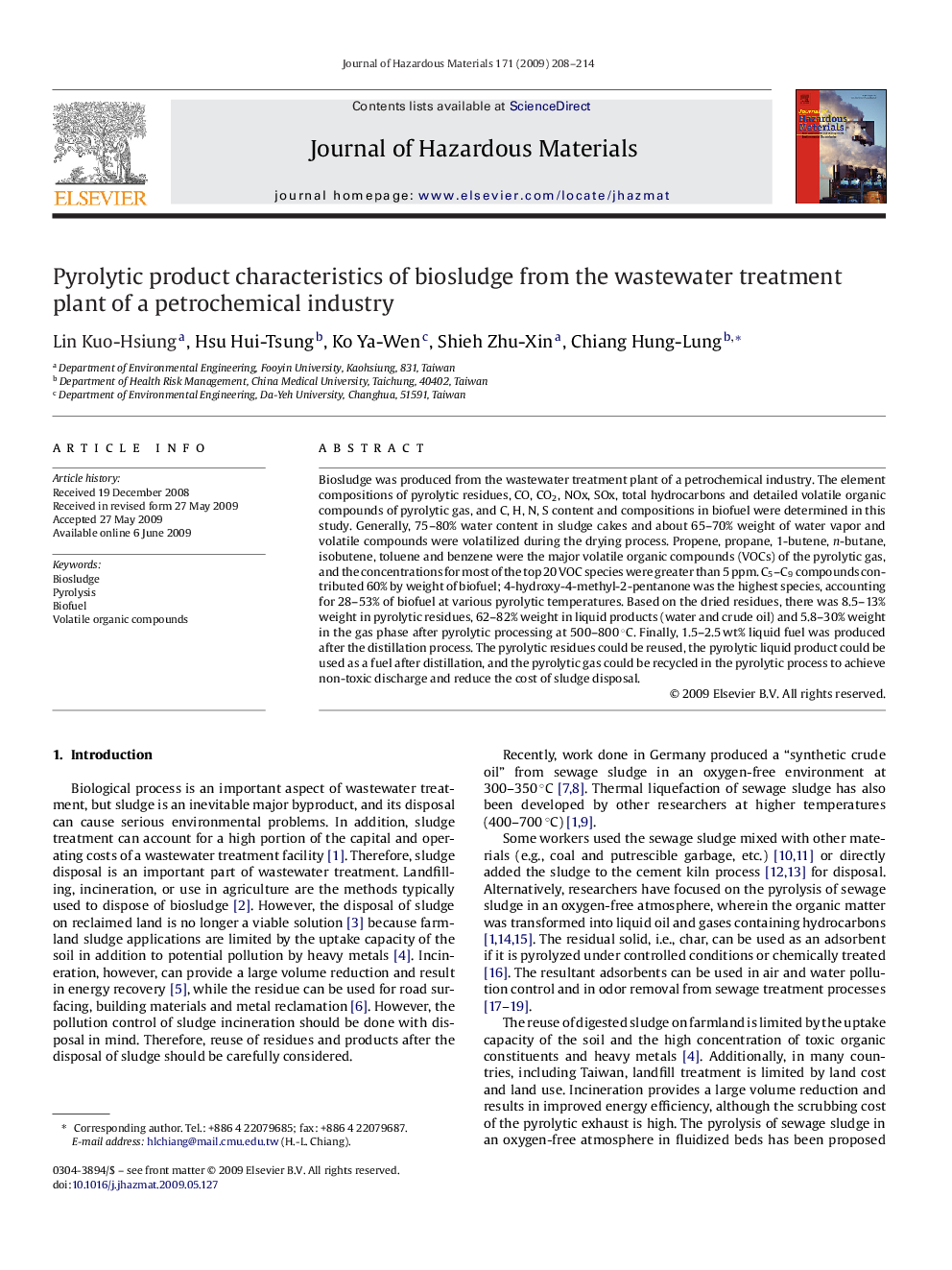| Article ID | Journal | Published Year | Pages | File Type |
|---|---|---|---|---|
| 581123 | Journal of Hazardous Materials | 2009 | 7 Pages |
Abstract
Biosludge was produced from the wastewater treatment plant of a petrochemical industry. The element compositions of pyrolytic residues, CO, CO2, NOx, SOx, total hydrocarbons and detailed volatile organic compounds of pyrolytic gas, and C, H, N, S content and compositions in biofuel were determined in this study. Generally, 75-80% water content in sludge cakes and about 65-70% weight of water vapor and volatile compounds were volatilized during the drying process. Propene, propane, 1-butene, n-butane, isobutene, toluene and benzene were the major volatile organic compounds (VOCs) of the pyrolytic gas, and the concentrations for most of the top 20 VOC species were greater than 5 ppm. C5-C9 compounds contributed 60% by weight of biofuel; 4-hydroxy-4-methyl-2-pentanone was the highest species, accounting for 28-53% of biofuel at various pyrolytic temperatures. Based on the dried residues, there was 8.5-13% weight in pyrolytic residues, 62-82% weight in liquid products (water and crude oil) and 5.8-30% weight in the gas phase after pyrolytic processing at 500-800 °C. Finally, 1.5-2.5 wt% liquid fuel was produced after the distillation process. The pyrolytic residues could be reused, the pyrolytic liquid product could be used as a fuel after distillation, and the pyrolytic gas could be recycled in the pyrolytic process to achieve non-toxic discharge and reduce the cost of sludge disposal.
Related Topics
Physical Sciences and Engineering
Chemical Engineering
Chemical Health and Safety
Authors
Lin Kuo-Hsiung, Hsu Hui-Tsung, Ko Ya-Wen, Shieh Zhu-Xin, Chiang Hung-Lung,
